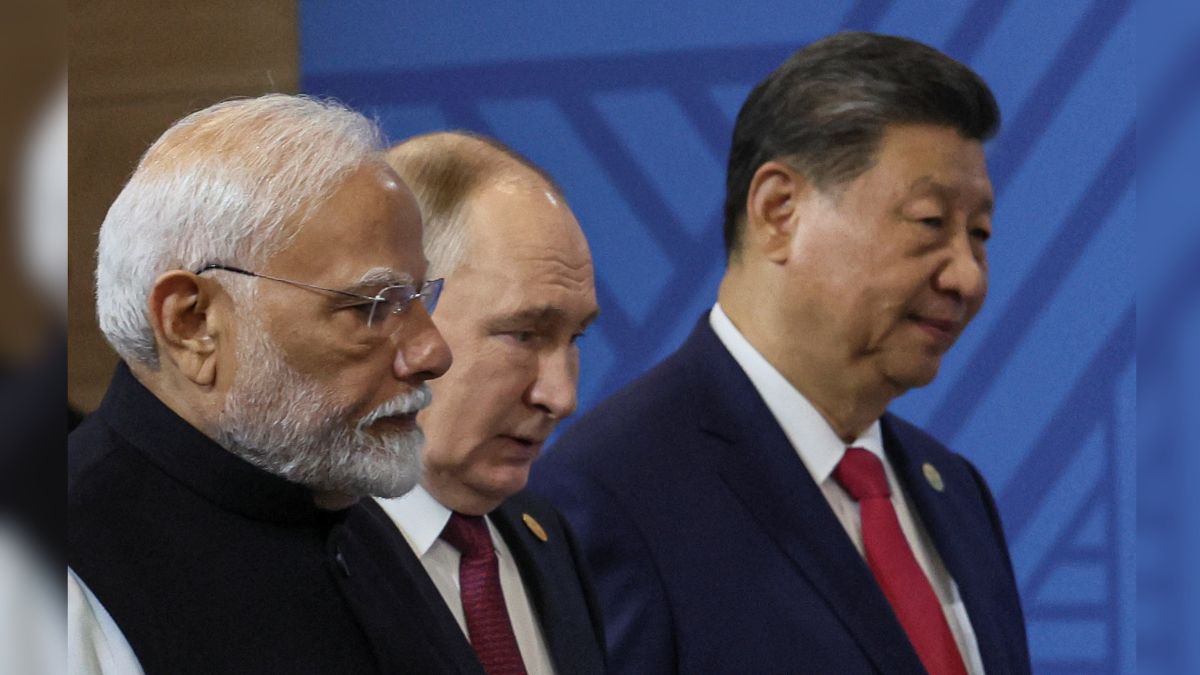Chinese President Xi Jinping will personally welcome Prime Minister Narendra Modi and Russian President Vladimir Putin at the Shanghai Cooperation Organisation (SCO) summit next week.
With renewed focus on the Russia-India-China (RIC) axis and a subtle message aimed at countering the disruptive global influence of US President Donald Trump, the gathering is being positioned as a bold statement of Global South solidarity.
Apart from Russian President Putin, the upcoming Shanghai Cooperation Organisation (SCO) summit in China will host leaders from Central Asia, the Middle East, South Asia, and Southeast Asia.
The high-profile gathering is set to take place in the northern port city of Tianjin from August 31 to September 1.
A key highlight of the summit will be PM Modi’s first visit to China in over seven years, signaling a cautious step toward easing ongoing tensions between the two countries following the deadly border clashes in 2020.
PM Modi, President Xi, and President Putin last appeared together at the 2024 BRICS summit in Kazan, Russia, even as Western leaders continued to isolate Putin over the ongoing conflict in Ukraine.
Just last week, Russian embassy officials in New Delhi expressed hopes for upcoming trilateral talks involving Russia, India, and China, an indication of renewed interest in strengthening the RIC framework.
“Xi will want to use the summit as an opportunity to showcase what a post-American-led international order begins to look like and that all White House efforts since January to counter China, Iran, Russia, and now India have not had the intended effect,” Reuters quoted Eric Olander, editor-in-chief of The China-Global South Project, a research agency, as saying.
“Just look at how much BRICS has rattled (US President) Donald Trump, which is precisely what these groups are designed to do,” Olander added.
This year’s summit is expected to be the largest in the SCO’s history since its founding in 2001, according to the Reuters report, citing a Chinese foreign ministry official, who described the bloc as “an important force in building a new type of international relations.”
Impact Shorts
More ShortsOriginally formed by six Eurasian countries with a focus on regional security and counter-terrorism, the SCO has since grown to include 10 permanent members along with 16 dialogue and observer states. Its agenda has also broadened to encompass economic collaboration and military cooperation.
While expansion remains a key priority for several participating nations, analysts note that the SCO has struggled to deliver concrete outcomes over the years. Still, they argue that China places significant value on the symbolic display of Global South unity—particularly in counterbalance to the United States—amid increasing geopolitical uncertainty and unpredictable shifts in U.S. foreign policy.
“What is the precise vision that the SCO represents and its practical implementation are rather fuzzy. It is a platform that has increasing convening power, which helps in narrative projection,” Reuters quoted Manoj Kewalramani, chairperson of the Indo-Pacific Research Programme at the Takshashila Institution thinktank in Bangalore, as saying.
“But the SCO’s effectiveness in addressing substantial security issues remains very limited,” he added.
Tensions persist between key SCO members India and Pakistan.
A joint statement could not be issued at the bloc’s defence ministers’ meeting in June, after India objected to the omission of any reference to the April 22 terror attack on Hindus in Kashmir’s Pahalgam, an incident that triggered the most intense cross-border fighting between the two countries in decades.
India also declined to support the SCO’s condemnation of Israeli strikes on Iran, a fellow member state, earlier that month.
Despite these disagreements, recent signs of thaw between India and China — following five years of strained border relations — have raised hopes for a constructive meeting between PM Modi and President Xi Jinping on the sidelines of the summit.
At the same time, renewed tariff pressure from the Trump administration has added another layer of incentive for closer engagement between New Delhi and Beijing.
“It’s likely (New Delhi) will swallow their pride and put this year’s SCO problems behind them in a bid to maintain momentum in the détente with China, which is a key Modi priority right now,” said Olander.
India’s priorities at the SCO include trade, connectivity, respect for sovereignty and territorial integrity, Indian foreign ministry official Tanmaya Lal told Reuters.
Pm Modi is also likely to hold bilateral meetings on the sidelines of the summit.
Analysts expect India and China to announce further incremental border measures such as troop withdrawals, the easing of trade and visa restrictions, cooperation in new fields including climate, and broader government and people-to-people engagement.
Despite the lack of substantive policy announcements expected at the summit, experts warn that the bloc’s appeal to Global South countries should not be underestimated.
“This summit is about optics, really powerful optics,” added Olander.
PM Modi is expected to depart from China after the summit, while Putin will stay on for a World War Two military parade in Beijing later in the week for an unusually long spell outside of Russia.
With inputs from agencies
)